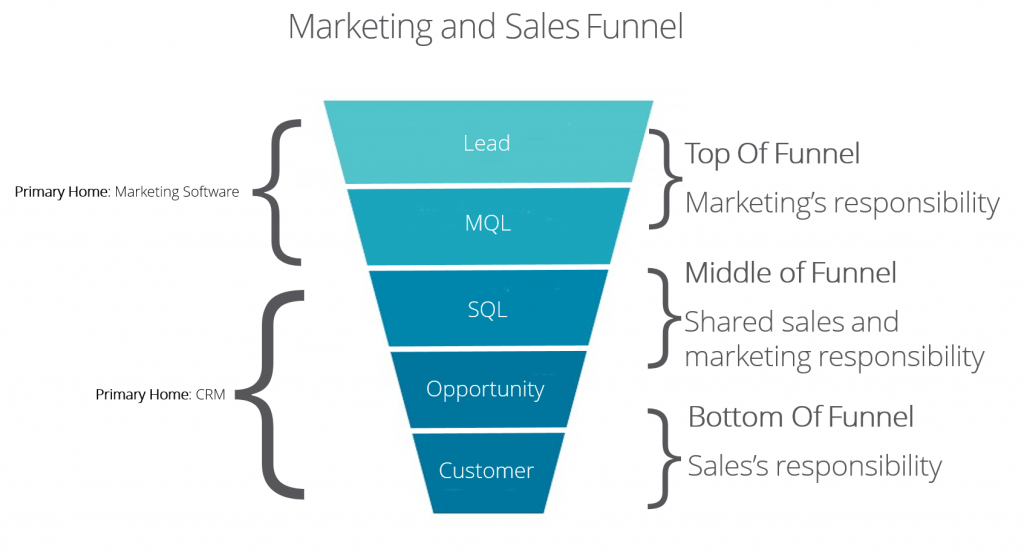Are your B2B lead nurturing strategies in need of a reboot?
Many B2B sales and marketing leaders bang their heads against a wall trying to find the hidden secret to improving lead quality and their lead generation program.
Let’s face it; there’s nothing like seeing your online marketing efforts pay off when qualified leads roll into your company.
The typical B2B sales cycle is long, and it takes significant work to reach potential buyers.
Once you earn new leads, an effective lead nurturing process makes sure your sale team can convert leads. Don’t let a prime opportunity slip away due to mishandling of the buying process or poor B2B lead nurturing.
No matter what channels you use for B2B marketing, you’ll want to make sure that you have nurturing strategies integrated into your process. Aligned B2B sales and marketing teams understand the importance and urgency of taking care of every lead earned by your business.
Fractures and leads in your sales funnel are costly. Valve+Meter has designed a handful of B2B lead nurturing strategies to optimize your lead quality and turn them into viable sales conversions.
Understanding B2B Lead Nurturing
What is lead nurturing?
Lead nurturing refers to the process of building and maintaining relationships with potential customers, focusing on providing valuable information, and the infrastructure support to help them progress through the sales process.
By understanding and addressing how to nurture leads at each stage, businesses can increase the likelihood of converting leads into paying customers.
The importance of B2B lead nurturing
In B2B sales, the sales cycle is often longer and more complex than in B2C sales, making lead nurturing essential to conversion rate. By engaging and nurturing leads effectively, businesses can improve the buying journey, reduce the time the buying cycles requires, and ultimately increase their revenue.
This list of 16 best practices for B2B lead nurturing should help your marketing team narrow down the most promising leads for your sales team.
1. Categorize Your Leads
Different leads require their own level of lead nurturing — depending on the audience.
The standard approach categorizes leads based on the traditional B2B sales funnel.
From here you can work to further break them down into buyer personas depending on the lead type.
Our graphic helps you break leads down in your B2B lead nurturing strategies:
Some possibilities for categorization of your leads include:
2. Refine Your Lead Nurturing Approach With Scoring
Lead scoring methodology assigns a rating to the action taken by users when providing you with contact information. This predictive modeling anticipates the likelihood of a lead to convert.
Not all contacts are equal, so decide which items should gain a higher point value.
The score value informs you which B2B lead nurturing strategies will be most effective.
Some Actions to Base Scoring On:
- Requests for product demos
- Lingering on certain web page sections
- Voluntarily following your social media accounts
- Continued interest in your products or services
- Engagement with content marketing
- Resemblance to existing customers
Keep in mind, scores won’t remain static as the buyer’s journey adapts. Actions with a high score today may be lower a week from now.
As part of your lead nurturing campaigns, establish goals between the sales and marketing teams. It’s best not to let too much time pass once an action is first taken.
Define what steps to take once you’ve categorized your lead and assign a score to the potential customer.
Doing so helps keep leads from going cold and losing out on an opportunity to make a profit.
3. Use Email Automation To Your Advantage
One way to prevent leads from going cold is using some sort of email marketing automation.
Email marketing helps you execute automatic email generation and alert you when you’ve received a positive contact from a lead.
Automation isn’t meant to take the place of live human interaction. This is a common error in enterprise and small business lead nurturing.
All B2B lead nurturing strategies require a human element to distinguish your brand and stand out in your industry.
Instead, use email marketing as a way to keep your leads fresh and not let your lead-nurturing efforts go to waste. When the sales team is overwhelmed, marketing automation is a powerful tool.
Look for applications letting you schedule social media updates or let salespeople know when a lead is expecting a call from them.
Use these applications to track demo or personal consultation requests as well. There are quality leads throughout every marketing channel and marketing automation especially email helps nurture leads en route to your team taking over the sales process.
4. Listen And Learn From Feedback
Nothing replaces the experience of engaging with your leads and gaining insight into what they’re expecting.
You’ll learn to recognize when they need more encouragement in certain areas.
B2B lead nurturing strategies teach you how to turn reluctance into a solid sale. Most importantly you leave your potential customer comfortable with their decision.
The goal is to keep customers coming back and making them feel positive about their interactions with your company.
5. Work To Solve Your Lead's Problems
Lead nurturing often involves seeking out information to help your customers come to a decision.
In some cases, it could be finding information about the eco-friendliness of a product.
In other nurturing campaigns, demonstrating success stories from similar clients is precisely what new customers need.
Be willing and be patient.
Research and provide information answering any current or future questions your lead might present to you. This re-engagement tactic is extremely personal and resonates with buyers.
Make sure your B2B lead nurturing strategies include some sort of follow-up engagement if the first efforts fall short due to timing or budget restraints.
Let customers know you’re willing to work with them to get what they need.
6. Encourage Action From Leads
Like all marketing efforts, your lead nurturing strategy keeps prospects and existing customers engaged with your brand.
Keep your B2B leads informed of future specials and other trends in their area of interest.
Encourage them to consider other offers or products you offer in line with this information.
If your lead nurturing strategy indicates a prospect is favoring a particular direction, make sure your marketing team provides information letting them know how they’d benefit by taking action.
Don’t be too heavy-handed with your lead nurturing campaigns. Nothing turns off a potential sale like being too pushy or making leads feel like they’re being pressured into making a decision.
If they miss a window, keep them aware of when the next one comes around.
7. Constantly Re-Evaluate Your B2B Lead Nurturing Best Practices
Don’t fall into the trap of relying on old techniques fading in effectiveness. Lead nurturing campaigns should feel unique and personal to your prosects.
Take periodic breaks and review the strategies implemented in your lead nurturing efforts.
What seems to work most consistently?
Where are you losing out when it comes to moving leads to solid sales?
What opportunities could you be overlooking?
Measurements you should be including in your evaluation include:
- The number of leads coming in during a specific time period
- The type of actions you’re taking for each lead
- How long you’re taking to respond
- The success or failure rate of different tactics used with lead personas
- How many leads from different categories become an actual purchase
8. Craft Personalized Emails for Better Engagement
Boost your email marketing game by personalizing your messages. Changing the name and job title in your salutation is not customization.
Segment your email list based on various factors, such as:
- Industry
- Company size
- Past interactions with your brand
- Distinct pain points
- Anticipated or indicated position in buying cycle
Creating tailored content will:
- Address each lead’s specific needs
- Enhance engagement
- Improve conversion rates
9. Generate High-Quality, Targeted Content
Content is crucial for lead nurturing success. Businesses are inundated with content. Don’t risk becoming part of the white noise. Make your words, images, graphics, videos, and audio resonate with your audience.
Prioritize creating:
- Informative content
- Engaging material
- Content addressing your target audience’s pain points
Consider various formats, including:
- Blog posts
- Whitepapers
- Case studies
- Webinars
11. Keep Leads Engaged with Retargeting Ads
Lead nurturing campaigns should include paid ads to keep your prospects’ brand aware. Retargeting ads are effective and non-invasive.
Use retargeting ads to:
- Stay top-of-mind for leads who visited your website without converting
- Display tailored ads based on their interests and browsing history
- Encourage leads to return to your site and take action
12. Showcase Your Offerings through Free Trials and Demos
A highly valuable lead nurturing strategy is free trials or product demos. When your product is new, innovative, or challenging an existing competitors, you can establish value and accellerate the sales cycle.
Make it easy for leads to sign up, and ensure you follow up with them during and after the trial or demo to address any questions or concerns.
Offer free trials or product demos to:
- Demonstrate your product’s value
- Move leads down the sales funnel
- Provide consistent support during and after the trial or demo
13. Track and Fine-Tune Your Lead Nurturing Efforts
If you rest your lead nurturing process, you are likely to gain rust in your sales pipeline. Continually monitor your lead nurturing efforts to identify areas for improvement. Embrace technology and study competitors for strengths and weaknesses.
Tracking key metrics such as email open rates, click-through rates, and conversion rates to gain insights into the effectiveness of your strategies. Use this data to optimize your campaigns and drive better results. Study your buyer personas and test alternative tactics within test campaigns.
Continuously monitor your lead nurturing strategies to:
- Identify areas for improvement
- Gain insights from key metrics (e.g., email open rates, click-through rates, conversion rates)
- Optimize campaigns for better results
14. Strengthen Collaboration Between Marketing and Sales Teams
Lead nurturing strategies more than any other marketing tool requires cooperation between marketing and sales teams. Share information about leads, their engagement with your content, and any feedback they’ve provided.
This will help your sales team better understand the needs and preferences of your leads, ultimately improving your conversion rates. From the sales side, providing details about the most qualified leads and ideal customer behavior will guide further prospecting and nurturing efforts.
Forge strong relationships between marketing and sales teams to:
- Share lead information and engagement data
- Improve understanding of lead preferences
- Boost conversion rates
15. Focus on customer success
Customer loyalty drives growth. For most B2B lead nurturing, you should build campaigns from initial website visitors through the beginning of the second buying cycle. Earning referrals, reviews, and additional purchases from past customers is a true measure of your brand. Provide ongoing support to help customers achieve their goals.
Focusing on customer success to:
- Improve your conversion rates
- Generate repeat business and referrals.
- Ensure your product or service delivers on its promises
16. Prioritize Customer Success for Long-Term Results
Studying the buyer’s journey is keep to finding the next wave of quality leads. Modern tools provide so many customer insights there is no need to presume and guess about how to reach your target audience.
Continually test and refine your lead nurturing strategies to maximize their effectiveness on the buyer’s journey. Experiment with different types of content, messaging, and channels to determine what resonates best with your target audience. Emphasize customer success to:
- Enhance conversion rates
- Optimize content marketing materials
- Encourage faster buying cycles, repeat business
- Generate direct engagement from more leads
Why Is Lead Nurturing Important?
Lead nurturing is an essential aspect of any successful marketing and sales strategy. This section will explore the importance of lead nurturing by discussing its various benefits and impacts on business growth.
Builds Strong Relationships with Prospects
Lead nurturing helps you establish and maintain strong relationships with your potential customer. By providing relevant and valuable content, you demonstrate that you understand the needs and are genuinely interested in helping prospects succeed. This builds trust and rapport within the transaction and throughout your industry.
Increases Conversion Rates
Many businesses build elaborate marketing channels but allow non-nurtured leads to navigate the buyer’s journey alone. When you nurture your leads effectively, you increase the likelihood that they will convert. Lead nurturing helps to guide prospects through the sales funnel, addressing their concerns and providing the information they need to make informed purchasing decisions.
Improves Customer Retention
Lead nurturing doesn’t stop once a prospect becomes a customer. You foster loyalty and encourage repeat business by continuing to engage with your customers and offering ongoing support. This not only improves customer retention but also increases the lifetime value of each customer.
Reduces the Sales Cycle
Effective lead nurturing can help to shorten the sales cycle. By providing prospects with the right information at the right time, you can address their concerns and navigate them more quickly through decision-making. This results in a more efficient sales process and enables your sales team to close deals faster.
Enhances Brand Reputation
By consistently delivering valuable content and support to your leads, your brand builds credibility and authority. Prospects will come to associate your brand with expertise and trustworthiness, which can help you stand out from your competitors and attract more leads in the future.
Allows for Better Lead Scoring and Prioritization
Lead nurturing enables you to track and analyze the behavior of your leads. A lead score prioritizes prospects based on their level of engagement and interest. This helps your sales team focus on the most promising leads, increasing the chances of conversion and improving overall sales efficiency.
Creates Opportunities for Cross-Selling and Upselling
As you nurture your leads and build strong relationships with them, you also create opportunities to cross-sell or upsell your products and services. By understanding your customer’s needs and preferences, you can recommend additional solutions that complement their existing purchases, ultimately increasing your revenue.
Elements of a Successful Lead Nurturing Campaign
So what makes a successful lead nurturing campaign? In this section, we will explore the key elements that contribute to an effective lead-nurturing campaign and discuss how to implement them for maximum results.
Clearly Defined Goals and Objectives
Before launching a lead nurturing campaign, it’s essential to establish clear goals and objectives. These could include increasing conversion rates, reducing the sales cycle, or improving customer retention. Having well-defined goals will help you measure the success of your campaign and make data-driven decisions for future optimizations.
Understanding Your Target Audience
Study your market, past customers, and form a deep understanding of your target audience. This involves:
- Identifying your buyer personas
- Understanding their pain points and needs
- Knowing their preferred channels of communication
- Recognizing their stage in the buyer’s journey
By understanding your target audience, you can create personalized and relevant content that resonates with them and effectively guides them through the sales funnel.
Multi-Channel Approach
An effective lead nurturing campaign leverages multiple channels to engage with leads. This may include:
- Email marketing
- Social media
- Content marketing
- Webinars
- Retargeting ads
Using a multi-channel approach helps you reach your leads where they are most active and ensures that your messaging remains consistent across different platforms.
Personalized and Valuable Content
Creating personalized and valuable content is at the heart of any successful lead nurturing campaign. This involves:
- Segmenting your leads based on their interests and needs
- Tailoring your messaging to address their specific pain points
- Providing educational and informative content that establishes your expertise
By delivering personalized content, you can build trust with your leads and move them closer to making a purchasing decision.
Regular Communication and Engagement
Consistent communication is essential for keeping your leads engaged and moving them through the sales funnel. Establish a communication cadence that:
- Keeps your brand top-of-mind
- Provides regular touchpoints
- Offers valuable insights and updates
Remember to balance the frequency of your communication to avoid overwhelming your leads or coming across as spammy.
Timely Follow-Up and Responsiveness
Prompt communication maintains momentum in your lead nurturing campaign. This includes:
- Responding to inquiries and questions quickly
- Addressing concerns or objections promptly
- Providing additional information or resources as needed
By being responsive and attentive with follow-up, you demonstrate your commitment to your leads and increase the likelihood of conversion.
Collaboration Between Marketing and Sales Teams
A successful lead nurturing campaign requires culture of cooperation and collaboration between marketing and sales teams. This involves:
- Sharing lead data and insights
- Aligning messaging and objectives
- Collaborating on lead scoring and prioritization
Strong collaboration ensures a seamless transition for leads as they move from the marketing funnel to the sales process.
Ongoing Analysis and Optimization
Continuously analyzing your lead nurturing campaign’s performance identifies areas of improvement and making data-driven decisions. Monitor key metrics such as:
- Conversion rates
- Email open rates
- Click-through rates
- Engagement on social media
Use these insights to optimize your campaign for better results over time.
Put B2B Lead Nurturing Strategies to Work Now
A successful marketing strategy improves lead quality through experimentation and new ideas. While lead nurturing strategies can seem complex, nearly all businesses have an understanding of the buyer’s journey and predictable patterns of existing customers.
The definition of insanity is performing the same process repeatedly, expecting different results.
Building lead nurturing campaigns keeps your strategies fresh for your B2B sales leads.
The 16 B2B lead nurturing outlined in this article are just the beginning of your potential. Take these ideas and start building toward a higher conversion rate.
At Valve+Meter, we understand how to help business partners work through lead nurturing. Request a free marketing assessment and let’s discuss how we can help you.





